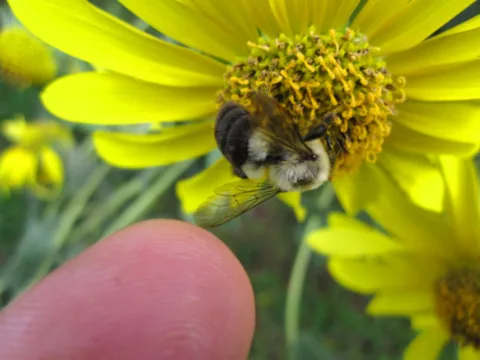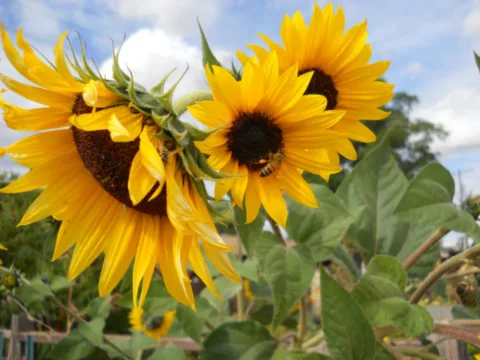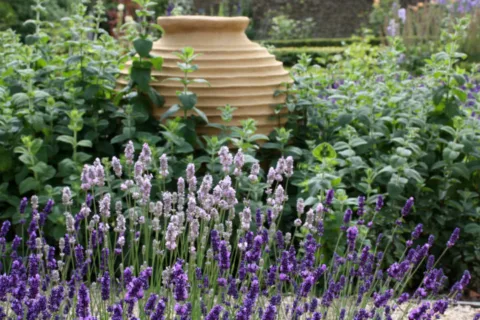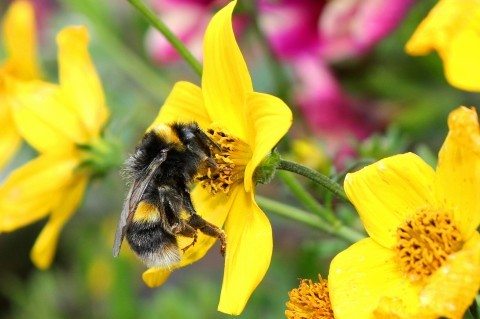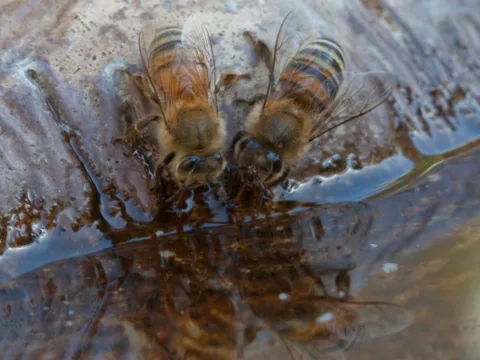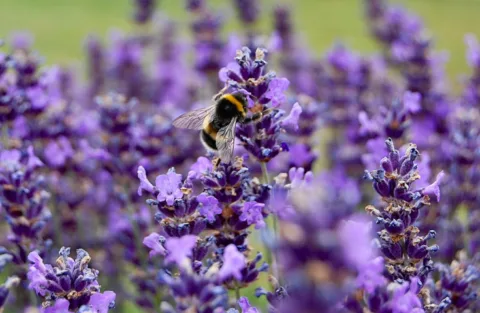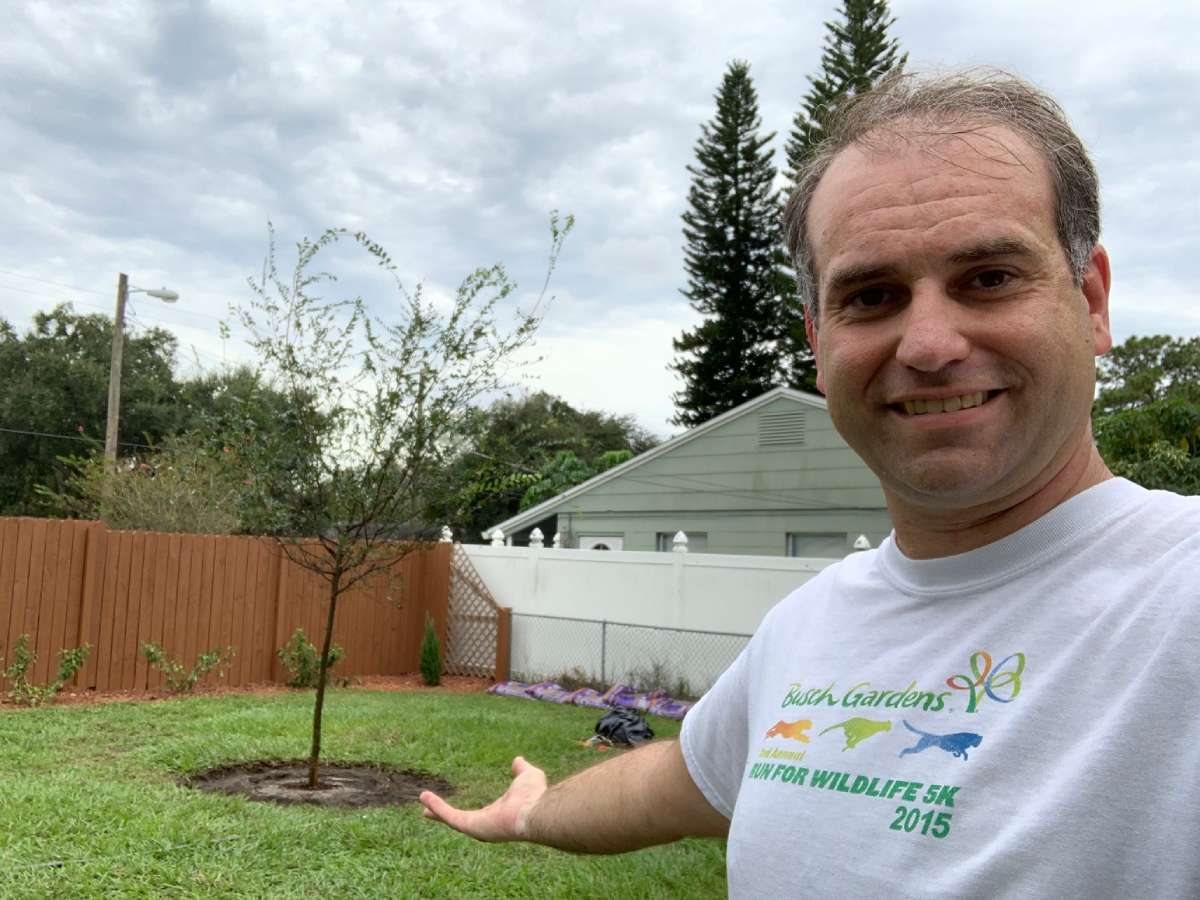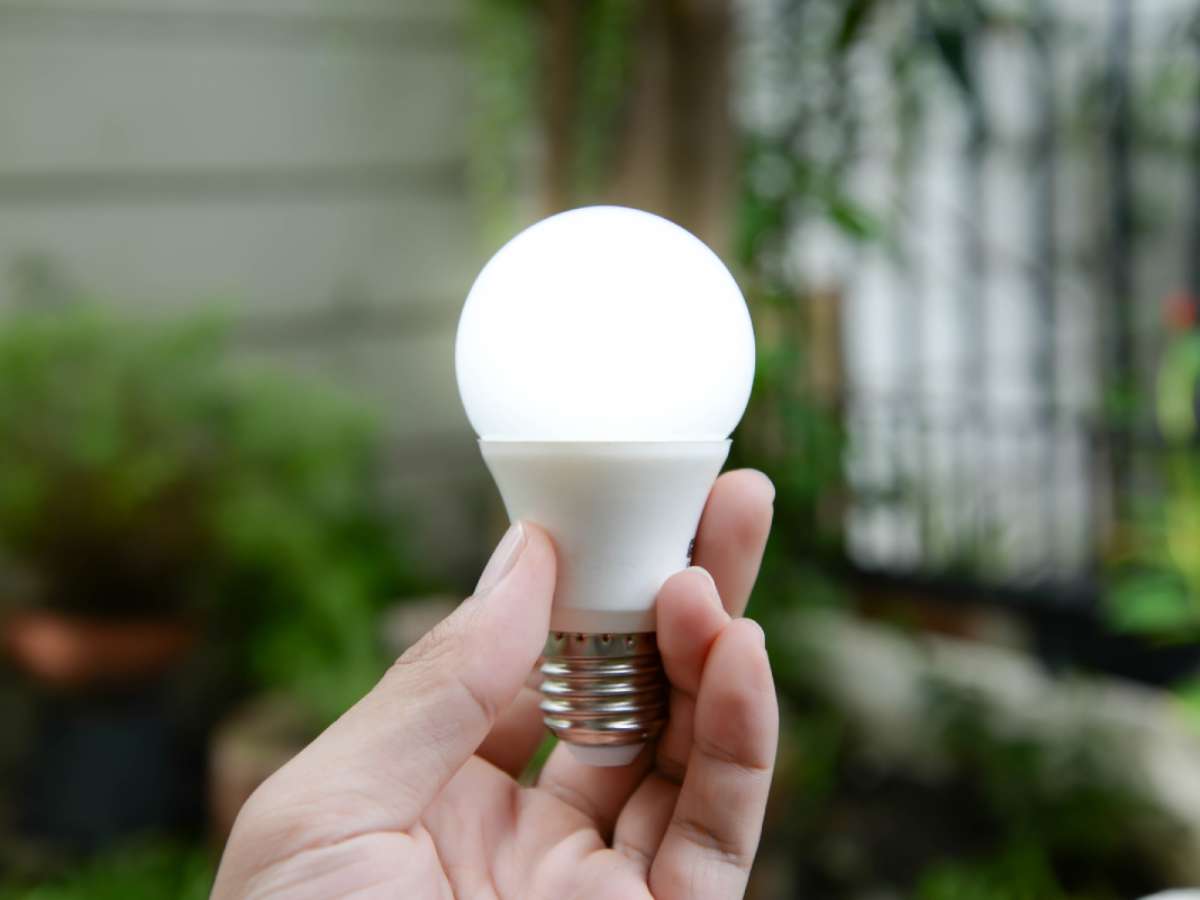More bees means better chances of pollination, so you’ll get more blooms in your flower garden and more yields from your vegetable garden — as much as 3 times more!
That’s right, the more pollinators you have in your garden, the better your harvest will be.
Here are 10 environment-friendly ways to attract bees to your garden, plus a list of specific plants that attract bees.
Top 10 Tips For Attracting Bees
One benefit of attracting bees to your garden is the fact you’ll also be attracting other pollinator insects—like butterflies!
#1 – Choose plants that will bloom in sequence.
You don’t want just one single plant that only blooms during the springtime.
When you have plants that bear flowers all year long, then you attract more bees to your garden.
Bees love native wildflowers, flowering herbs, berries and many flowering fruits and vegetables. Source
#2 – Plant white, yellow, blue, and purple flowers.
Honey bees have no ability to see beyond the red region of the visible spectrum, so they cannot make out reddish-tinged blooms.
One good idea is to plant sunflowers. Sunflowers are nectar-rich and can draw a host of helpful garden insects to your garden.
#3 – Group your plants in one area.
A single flower blossom does not attract bees.
Groups of plants appeal to bees because when they gather nectar, they do so from flower to flower.
Flowers with double petals do not attract bees as well as single-petal blossoms. This is because most double blossoms offer less pollen and nectar than single blossoms. Often their extra set of petals has replaced pollen-laden anthers. Double blossoms also make it more difficult for bees to reach the inner flower parts. Source
#4 – Choose local, native plants.
Bees from your own area of the country will be mostly attracted to plants from that same area of the country. Yep, native plant varieties attract the highest number of bees.
Inbred flowers (or hybrid varieties) — characterized by unnaturally large & multiple petals, long blooming cycles, and unusual colors — have inferior nectar quality. Stick to “pure” varieties instead.
Research suggests native plants are 4 times more attractive to native bees than exotic flowers. They are also usually well adapted to your growing conditions and can thrive with minimum attention. In gardens, heirloom varieties of herbs and perennials can also provide good foraging. Source
#5 – Leave bald patches of soil in your garden.
Bees also gather mud and soil in order to build their hives.
So a garden that’s completely covered with mulch may not be appealing to bees.
#6 – Plant flowering vegetable and fruit plants.
Flowering food plants — like peppers, strawberries, cantaloupe, squash, pumpkins — will attract bees to your organic garden.
Berries, melons, squash, cucumbers, and fruit trees, especially cherry trees, all produce fragrant flowers and fruit that are attractive to bees. Source
#7 – Place your plants in bee-friendly locations.
Bees like sunny spots better than shady ones.
They also need some shelter from strong winds.
#8 – Dedicate a “wild” and uncultivated space in your garden.
Let weeds grow undisturbed in that “wild” space throughout the winter.
That way, bees can find refuge in the grass and source their much-needed nesting material there.
Loss of nesting habitat is a serious problem for wild bees. Perfectly neat yards and gardens do not provide the raw materials bees need to construct their nests. You can provide good nesting habitat by preserving a small brush pile, areas with dry reeds or grasses or deadwood. A muddy area will provide essential nesting material for mason bees. Source
#9 – Don’t use pesticides.
The best weed killer is the one that gets you to exercise a bit and is chemical-free: a garden hoe.
If necessary, choose insecticidal soaps (or oils) and other eco-friendly pest control products.
Pesticides play a major role in the decline of bee populations. Pesticides can get into the pollen and nectar and can be carried back to the hive where they affect all the bees in the colony. Source
#10 – Provide a source of water.
One idea is to have an inconspicuous bird feeder nearby.
Keep in mind, it needs to be shallow and bees need to have “islands” in the water to land on — like rocks or twigs.
A sloping bird bath with stones for bees to stand on, a backyard waterfall, a pool, a dripping hose, almost any shallow water source will do. Cabbage and broccoli leaves full of fresh morning dew, and newly watered potted plants with peat soil are favorite destinations for my bees. Source
Specific Plants That Attract Bees
- Asters
- Bluebells
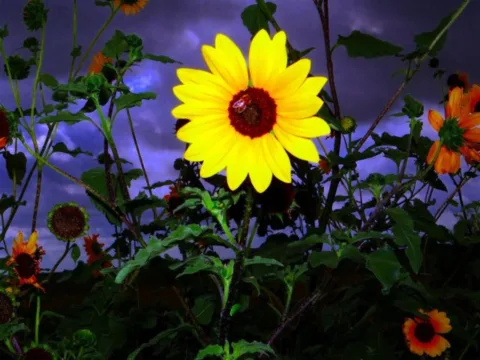 Bugles
Bugles- Cherry Trees
- Coneflowers
- Crab Apple Trees
- Crocus
- Daisies
- Eucalyptus
- Flowering Currant
- Forget-Me-Nots
- Hawthorn
- Heather
- Hellebores
- Lavender
- Mahonia
- Pulmonaria
- Pussy Willows
- Rhododendron
- Roses
- Rosemary
- Sedums
- Sunflowers
- Viburnum
- Zinnias
Here are 2 great lists: Using Native Plants vs Garden Plants To Attract Bees and A List Of Annuals, Perennials, Trees & Shrubs That Attract Bees
Drawing more bees to your organic garden does not only increase your harvest. You also help the environment.
Give the above tips a try, then sit back and watch your garden bloom!

